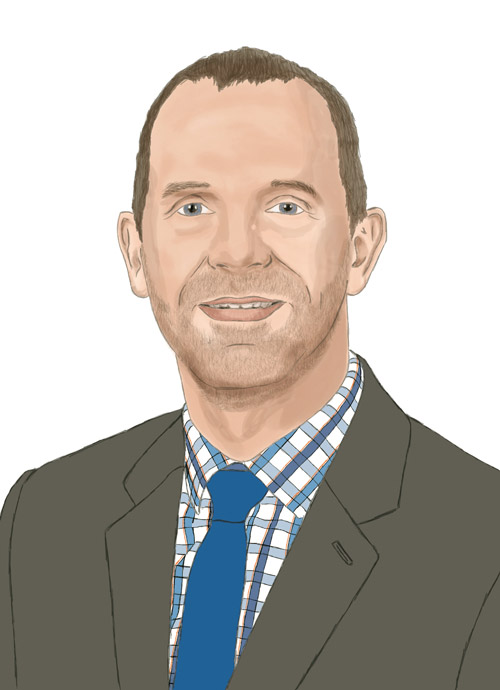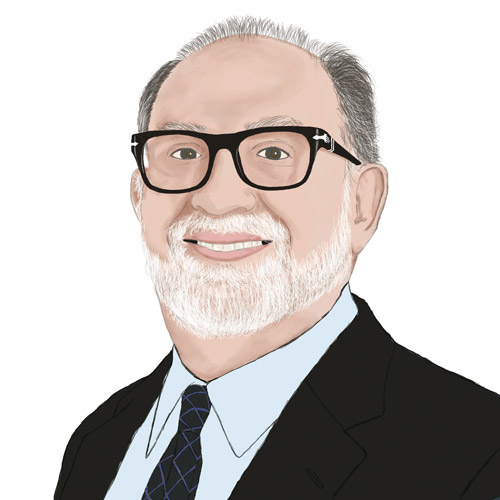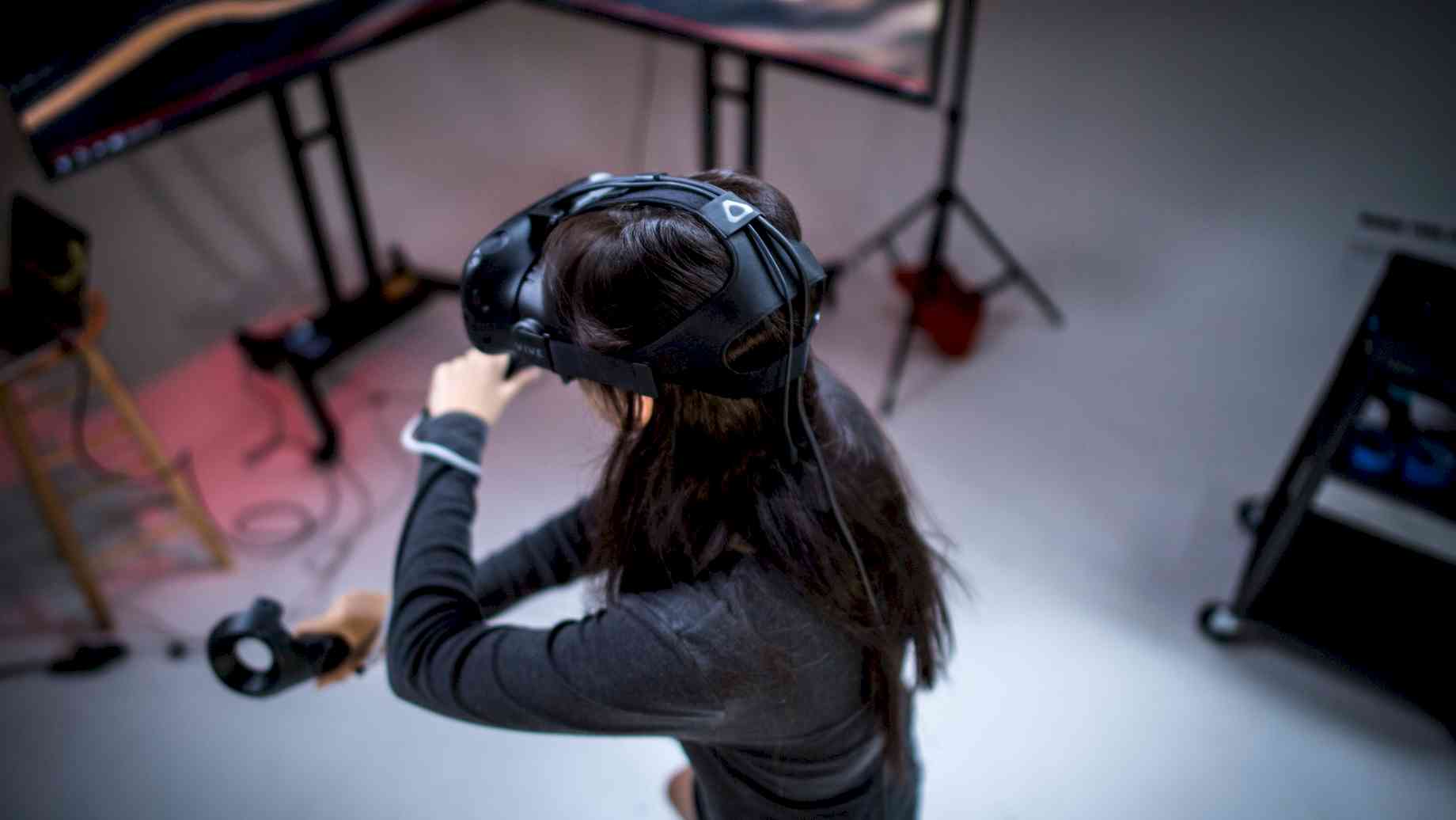Hans van Oostrom has two photographs he shows to make a point about educating University of Florida students.
In the first, students are lined up in rows in an auditorium, facing a lecturer. In the other, students are lined up in rows in an auditorium, facing a lecturer. The first, in black and white, is from the 1970s. The second, in color, is from today.
In the midst of what has been called the fourth industrial revolution, marked by the connections of the physical and cyber worlds, we can do better, says van Oostrom, who conducts research on educational methods and directs the Institute for Excellence in Engineering Education.

Cammy Abernathy, dean of UF’s Herbert Wertheim College of Engineering, says educational opportunities are limitless in an age that offers virtual reality, artificial intelligence, facts-at-your-fingertips, machine learning and big data analytics, along with the next new thing, whatever that might be.
“The way we deliver education must change,” Abernathy says. “Our goal is to make UF the most digitally literate, digitally responsible public university in the nation.”
On campus, a short walk from the lecture hall where van Oostrom’s photos were taken, is one example of what progress looks like.
At the Digital Worlds Institute, in the Polymodal Immersive Classroom Theater, or PICT, class is in session.
The professor stands at a podium, operating touch controls like a starship commander. An immersive, multi-channel projection system creates a panorama that unfolds on multiple screens, some showing lessons, others showing students. Cameras seamlessly zoom in on a student asking a question, which can be answered synchronously by another student anywhere in the world. Behind the scenes is a control room.
Today, it’s state of the art and the only classroom of its kind at UF, says James Oliverio, director of the Digital Worlds Institute and a collaborator with engineering and education researchers on the digital literacy initiative. But in a more digitally literate world, PICTs, or something better, could be everywhere.
Van Oostrom will draw on Oliverio’s expertise with environments like the PICT in designing a new space for the digital literacy initiative called the iClassroom. For now, it will be based in engineering’s Larsen Hall and will function as a testbed for the use of new technologies in education. The iClassroom will be a place where vendors and tech developers can test the real world educational applications of their inventions. Teaching will occur as students use the devices, improving upon some, identifying flaws in others. In addition to building a physical space, UF will build a curriculum for digital literacy, open to all students.
Technology moves fast, and UF will have to move fast, too, to stay current.
“As a large, traditional institution, we don’t often move fast, that’s part of what we want to change,” van Oostrom says.

The iClassroom will move to the Data Science and Information Technology building, once the planned $70 million, 150,000-square-foot structure goes up next to Larsen Hall.
“Version 1.0 of the iClassroom will help us design that space,” van Oostrom says. “It’s a research approach, to try out new technologies for education and see what works.”
The resources of the Warren B. Nelms Institute for the Connected World also will come into play, and when the program is fully developed, it will offer certificates in digital literacy and data analytics.
New technologies will offer more opportunities for precision learning, van Oostrom says. Students who need more help, would get more help. Students who have grasped a concept could move on.
“I envision a classroom that integrates the physical and virtual worlds, where students have goggles on, and they have their own individual instructor, a virtual instructor, who will teach them some of the basics,” van Oostrom says. “Then afterward, perhaps the students work together on a project.
“That technology is not too far away — bits and pieces exist — and we can integrate them for education.”
Another vital component of the initiative is the College of Education’s Institute for Advanced Learning Technologies, which is hiring several top researchers to crunch data on how current online students learn with the aim of designing online and “hybrid” residential/online educational experiences for tomorrow’s students.
“We’re focused on re-envisioning how learning is occurring in the online and hybrid space now,” says College of Education Dean Glenn Good, “so we can figure out what learning is going to look like 15 years from now.”

While tools like social media and video chat might dominate today’s online experience, the researchers anticipate virtual and augmented reality being the platform of the future. Laboratories featuring state-of-the-art tools are key components of a $30 million renovation currently underway at the College of Education’s Norman Hall, which houses the PICT.
Oliverio says one of the things the Digital Worlds Institute brings to the conversation about digital literacy is a focus on how people interact with a technological space. Lecture halls, he says, are “so 20th century.”
Designing virtual educational environments requires thinking about how people experience an event or narrative, Oliverio says. That design approach will push classrooms into the multiple realities of 21st century technology.
Oliverio says “pesky human factors” must be taken into account since classrooms blend generations of humans as both teachers and students. No matter how dazzling the technology under the hood, digital classrooms need to feel natural and intuitive to avoid the kind of frustration that causes people to tune out.
“Once an interface makes you mad or frustrated, you’re not going to use it. You will stay in your comfort zone,” Oliverio says. “Just because the code underneath is brilliant, doesn’t mean the interface is usable.”
Oliverio says post-millenial generations expect to use technology. If classrooms are not in that space as well, “then we’re not preparing them to live and work in the middle of the 21st century.”
“Virtual and augmented realities, eventually other realities, are going to be a daily thing like television and iPhones. That’s the next internet, in ways we don’t yet fully appreciate,” Oliverio says.

Van Oostrom says social sciences will play a role in the digital literacy initiative in preparing students to be responsible in a more digital world. The virtual world can’t become the only world. Exploring social interactions that maintain a real-world connection is important, he says.
“The days are gone when we would build a technology and not worry about its effect,” van Oostrom says.
Positioning the digital literacy initiative in engineering, he says, is appropriate because of engineering’s approach to learning.
“When I studied electrical engineering, I was building things with transistors,” van Oostrom says. “Today, students buy a whole board with integrated chips. Engineering is not as stable as British literature from the 18th century. In four years in engineering, we need to teach students how to be lifelong learners.
“Because things will change.”
Source:
- Hans van Oostrom, Director, Institute for Excellence in Engineering Education.
- James Oliverio, Director, Digital Worlds Institute
This article was originally featured in the Summer 2019 issue of Explore Magazine.

